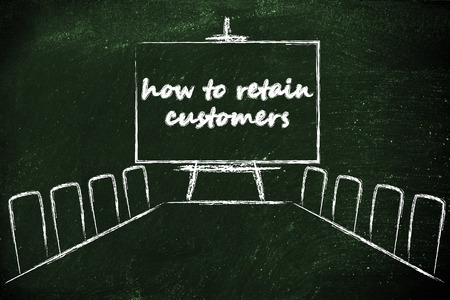
Often, the focus of marketing initiatives is focusing on how to bring in more customers. Yet, did you know that it is 6-7 times more expensive to acquire a new customer than it is to keep a current one? That’s a statistic worth considering.
The reality is that the value of current customers is often overlooked when setting marketing goals and priorities. The process to retain customers should begin after their first purchase. This ensures the development of a meaningful relationship, future sales and ongoing loyalty. According to Elizabeth Primm, Industry Director at Twitter, “Client renewal starts the day the sale closes.” If more companies invested in showing customers they care and deepen the bond that started when they first signed on the dotted line, they would create more sales opportunities.
3 Tips to Retain Customers
So how can marketers keep buyers from being “one and done” customers? Focus on these three tips to retain customers:
- Provide meaningful and trustworthy content. Educational and customer-centric content creates interest and drives traffic to your business because of its substance and reliability. Because they already have a relationship with you, customers are more likely to respond to your content than are prospects. In fact, the average conversion rate from content sent to a prospect is less than 1% while the probability of converting an existing customer is 60-70%. When you create content consistently that informs, provides tips and solutions and helps your customers be successful, they’re far more likely to return again and again.
- Enable customers to interact with the company or with each other. The internet and social media have changed the way companies and their customers interact. With more open communication and transparency, businesses can quickly, efficiently and directly respond to customers through LinkedIn, Facebook, Twitter, Instagram or via their own websites. In addition, companies committed to the communication process create more user groups, networks of followers or other types of communities. These groups provide excellent resources to collect data, share information and conduct ongoing dialogues. In this way, everyone can collaborate, learn from each other or problem solve.

- Proactively seek customer feedback and support. It may seem obvious, but few companies really take advantage of customer feedback. This is a mistake. Did you know that 39% of customers will decrease their spending after one bad experience, while 17% won’t return at all? If companies don’t invest in research, how can they evaluate their own performance? If they are not privy to the bad experiences customers have encountered, how can they correct a situation, whether it is a pattern or one-time occurrence? Online survey tools, social media platforms or simply picking up the phone are great ways to encourage customer feedback. While not everyone will respond, it is still important to address marketplace criticisms. This helps you protect your brand and reputation and improve the customer’s experience.
Retain Customers Through Marketing

In the end, the role of marketing is to support the sales team. This means not only generating interest and creating leads to bring in new customers but also investing in retaining current customers. Remember, consumers who feel they are valued and heard by their business partners are far more likely to say “yes” time and time again.

